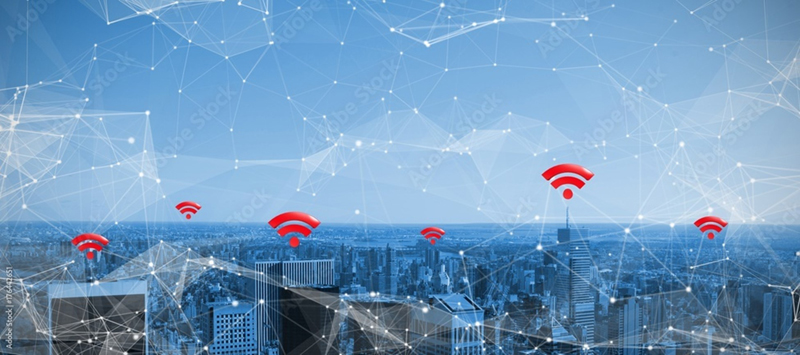How will next-gen, WiFi 6 tech impact your business?
Makati City, Philippines – [March 23, 2022] – Enterprise mobility is fast becoming a cornerstone technology for almost every business today. As a growing trend, mobility solutions enable firms to offer remote working options, allowing personal laptops and mobile devices for business purposes and using cloud technology for data access. With this technology, people can now get more things done in a day, faster than ever before, and with greater accuracy.
A wireless network is at the heart of every mobility solution, a key enabler for the steady flow of data to and from mobile devices that drive your business processes. It allows devices to stay connected to the network while staying untethered to any wires. Access points amplify Wi-Fi signals, so a device can be far from the router but still connected to the network.
Previously, it was thought that wired networks, using cables to connect devices to the internet or another network, were faster and safer than wireless ones. But as wireless network technology and Wi-Fi networking standards continue to evolve, it blurred the difference between wired and wireless networks’ security and speed.
Among the biggest trends changing the game in the wireless network is Wi-Fi 6, the next generation of Wi-Fi standard, also known as 802.11ax. Wi-Fi Alliance, the group that stewards the implementation of Wi-Fi, proposed the Wi-Fi 6 as the new standard since it builds on the strengths of its predecessor while adding efficiency, flexibility, and scalability.
What does the arrival of this technology mean for your business?
Randy Escuyos, Head of Wireless Business Unit at Fujitsu Philippines, said that Wi-Fi 6 delivers what enterprises and users want in their wireless network.
“Wi-Fi 6 can support next-generation applications on the same wireless LAN infrastructure while providing a higher grade of service to older applications. Embracing Wi-Fi 6 also ensures that any business can adopt new models and secure business agility,” Escuyos said.
Among the benefits of Wi-Fi 6 are as follows:
Increased Capacity
What makes Wi-Fi 6 a substantial upgrade over previous generations is its potentially faster connection speeds. Compared to Wi-Fi 5, Wi-Fi 6 quadruples bandwidth and capacity, reducing congestion and interference. Nowadays, better bandwidth is becoming increasingly critical as file sizes continue to increase along with the higher data demands. With its substantially reduced latency, 75% lower, according to Intel, the increase in the number of devices and traffic would not impact the application performance.
Gigabit Speeds
Wi-Fi 6 also offers much faster data rates. Compared to Wi-Fi 5, which maxes out at 3.5 Gbps, Wi-Fi 6 has a maximum throughput of up to 9.6 Gbps across multiple channels. This improvement ensures better user experience and performance for bandwidth-hungry apps like voice, video, and collaboration.
Wi-Fi 6 achieves this speed by combining the 2.4GHx and 5GHz spectrum bands and employing Multiple In/Multiple Out (MU-MIMO) technology for uplink and downlink data transfers. MU-MIMO enables multiple devices to communicate simultaneously with the access point. It helps provide four times network capacity, allowing enterprises to provide their workforce with more devices without risking congestion.
Improved Power Efficiency
Wi-Fi 6 has increased battery life. This improvement is crucial to average users and can be a critical factor in enabling the Internet of Things (IoT) devices using Wi-Fi communication. It utilizes target wake time (TWT) to extend its battery life, allowing the Wi-Fi access point to communicate with any device when it should turn its Wi-Fi radio on or off. It helps conserve power since the device will spend more time in sleep mode than previous Wi-Fi implementations.
Improved security
Since Wi-Fi 6 employs Wi-Fi Protected Access 3 (WPA3), the latest generation in mainstream security for wireless networks, it improves security compared to the widely popular WPA2 standard, released in 2004. But it still maintains backward compatibility. WPA3 uses the latest security protocols, enabling stronger authentication and increased cryptographic strength, ideal for businesses with sensitive data, such as healthcare.
Escuyos noted that there are several applications where Wi-Fi 6 can be utilized. In healthcare, for instance, health professionals can provide patients with faster care even in a remote setup using telehealth. In offices, it can keep the organization agile and promote collaboration among employees as it enables mobile devices, particularly in hybrid or work-from-home setups.
Fujitsu Philippines can support all these use cases and more for various industries through its end-to-end Mobility and Wireless Networks solutions. With its client computing devices, solutions, and mobility services, the company helps enterprises harness the power of Wi-Fi 6 to enable the efficiency, flexibility, and scalability that they need.
To learn more about Fujitsu Philippines, Inc., visit the website at www.fujitsu.com/ph.
Liked this post? Follow SwirlingOverCoffee on Facebook, YouTube, and Instagram.


